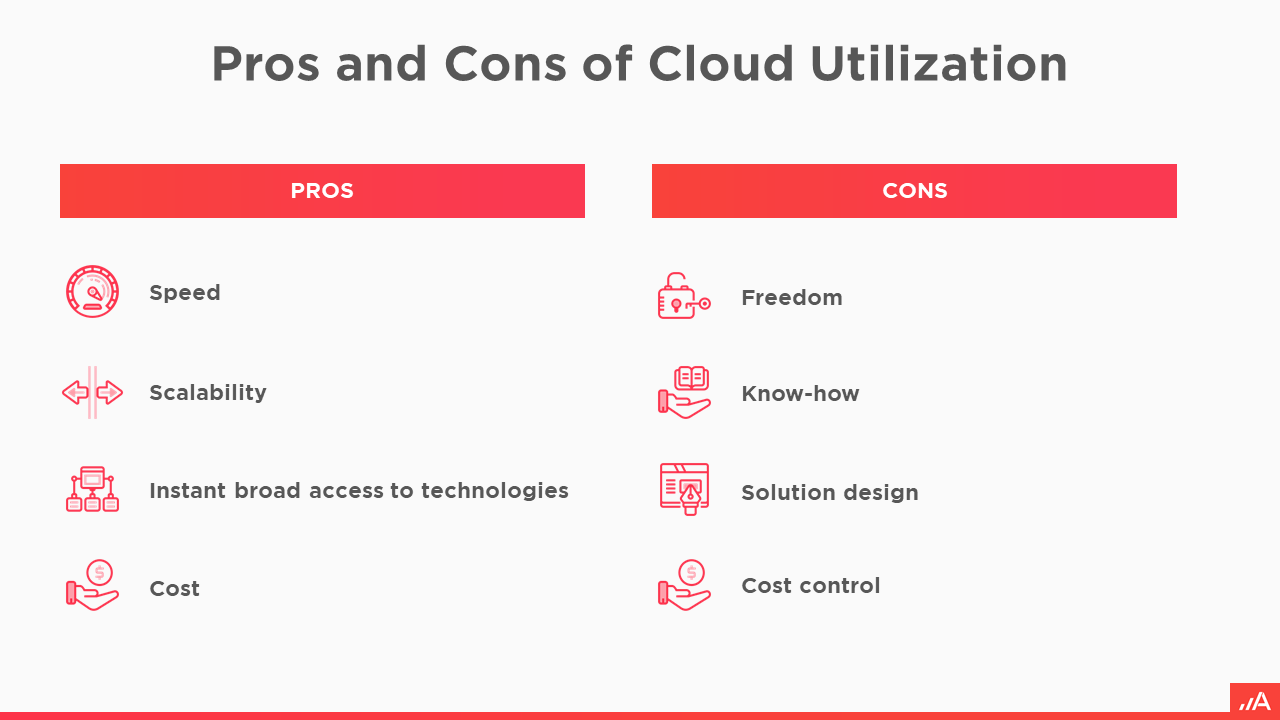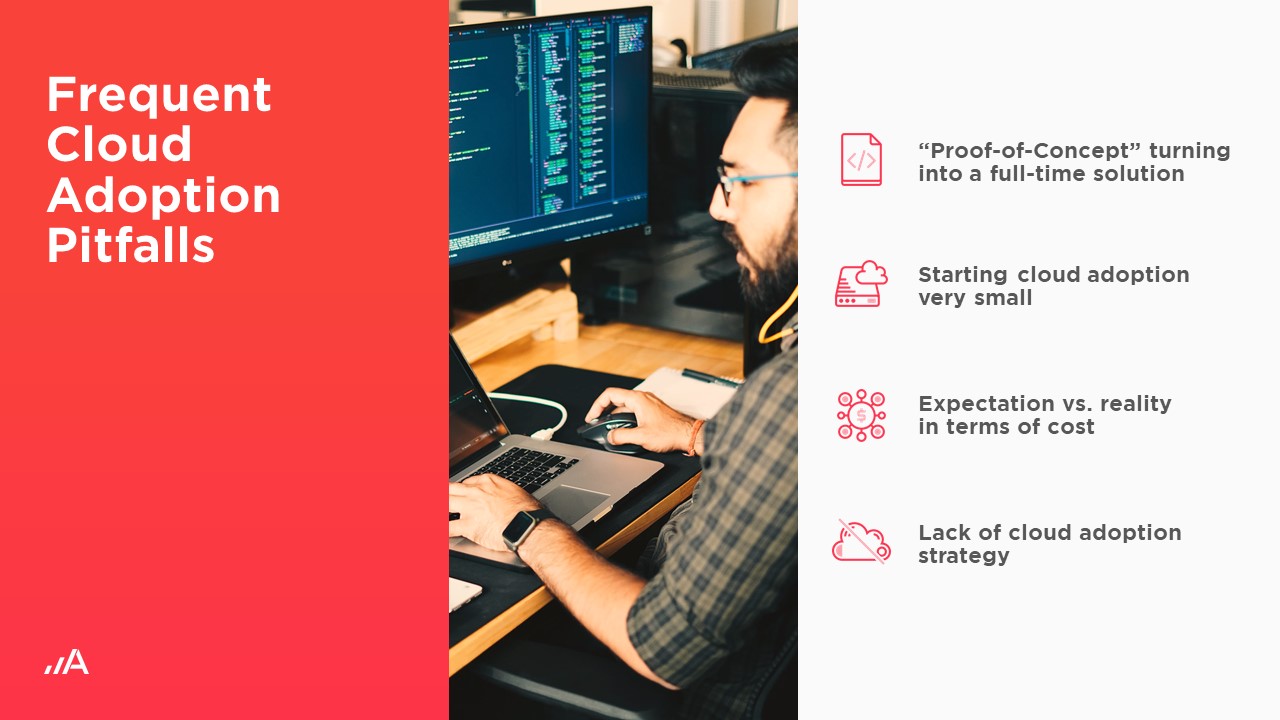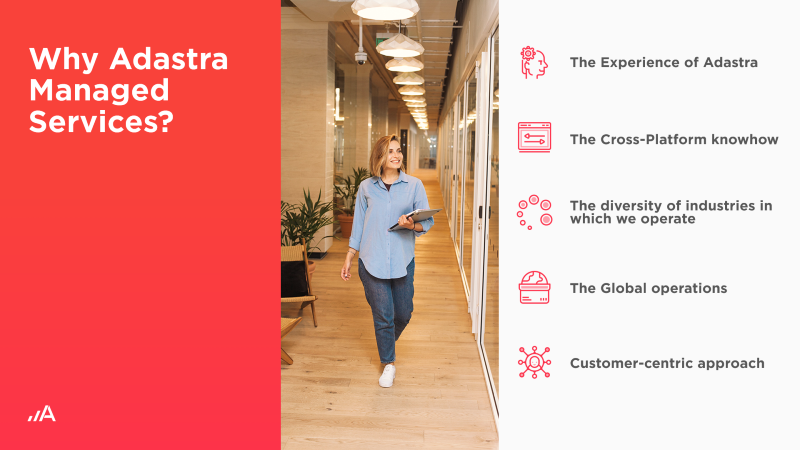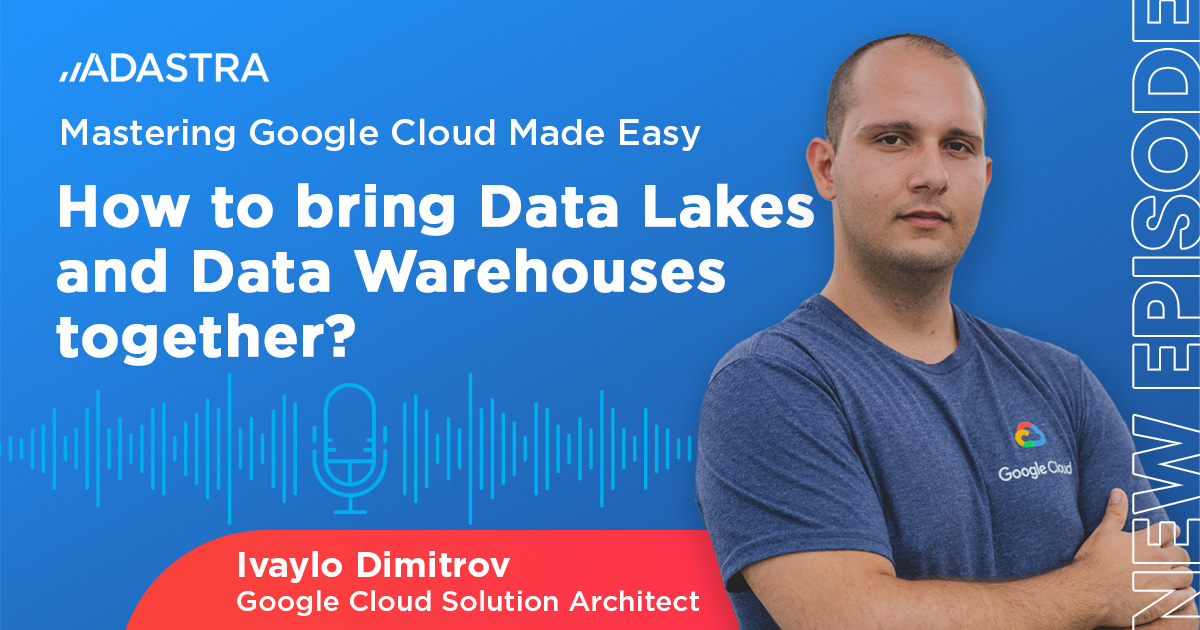Insights
Cloud Strategy: How to Maximize Cloud ROI?
October 12, 2021
Cloud and cloud technologies exist for more than a decade now. The adoption of those technologies started growing in the past 5-6 years. The benefits of the cloud are well understood, but not that easy to achieve. Many companies decide to slow down or even stop cloud adoption due to unsatisfactory results versus expectations – performance, cost optimization, or cloud ROI.
With this article, we try to help you to decide whether to go with the cloud, identify issues with your cloud adoption, and how to get the maximum of it.
Here are some topics covered:
- Pros and cons of cloud utilization (cloud vs. traditional)
- Frequent cloud adoption challenges (concerns of using cloud)
- How to maximize cloud ROI?
- Why Zelusit Managed Services?
PROS of Cloud Technology
We will try to move over several topics which I believe are important for getting the maximum out of your cloud and those are the pros and cons of cloud utilization, frequently cloud adoption challenges how to maximize cloud ROI and how Zelusit can help you achieve that. So, let’s do a deep dive in the first category which is pros and cons of cloud utilization. Let’s start with one major cloud advantage. This is speed.
I don’t believe it was ever that easy to get into the IT. It’s practically you need a credit card number and hopefully that’s your own credit card or company credit card and valid email address and you already can have an account in any of the cloud providers or the top three providers. For less than five minutes you can have a virtual machine spun up for less than 20 minutes you can have database there. That was never that easy or quick in the IT world.
The next interesting thing is the scalability – so practically the cloud gives you the freedom to scale up and scale down whenever you need. Some of you may relate to that when there is a peak of a need of additional resources or additional functionality or stability like you are running a campaign, you need more infrastructure, more power for a certain period of time. In the classic way of doing IT, that was investing in infrastructure which used to remain unutilized after the certain spike. A brief example of that is Black Friday, where you have three to four times increase into your system and after that it goes back to normal.
Instant broad access to technologies is again a benefit out of the cloud. If I remember, correctly, at least out of the AWS in Asia, you have more than 200 services which allow you to do almost everything that is needed to build a solution or to operate solution out of the cloud. And last but not least, the cost. If you do your job well and if your solution is correct, you will have cost benefits.

CONS of Cloud Technology
We have listed four components: freedom, know-how, solution design and cost control. They could be looked separately or in a chain reaction. Let’s start with the freedom. Some of you may say: “Why freedom is here, freedom is always a good thing.”, and we would agree with you but there is one quote from Eleanor Roosevelt: “With the freedom comes responsibility.” We talk about IT freedom – the freedom that IT people have to do different things. Letting an IT person in the cloud is like letting a kid in a candy shop unsupervised. What could go wrong, right?
Know-how is something you need to be aware. Cloud providers are constantly updating, changing, and introducing new services. Every quarter there is something new introduced which may allow you to do better in whatever your solution is doing or whatever your services is performing on the cloud. So, you need to be always on top of that. As long as cloud is not the core expertise in your company, you will most likely fall behind the trends and you won’t have the best possible means to use in your solutions.
Solution design is also a concern because, as we said, there is a lot of different functionalities out there, a lot of different services. You can build one solution in three or four or five different ways. If you don’t have the know-how or getting the right solution designed for your case it will be a waste of effort and money.
Last but not least, freedom comes at a cost, right? Cost control is something that the cloud providers have, but it’s not at the level which can help you prevent some issues. Implementing cost control is one of the important things when it comes to cloud utilization. Of course, the cloud providers have cost monitoring, they have some cost calculators that you can use at the beginning before you start, but still, if you really want to avoid things like overrunning your budget, cost control is something that you need to think and implement on top of the existing services.
Frequent Cloud Adoption Pitfalls

“Proof-of-Concept” turning into a full-time cloud solution
Let’s talk a little bit more about adoption pitfalls or what we see from our practice. The first one that we want to mention is the Proof-of-Concept turning into a full-time cloud solution. Proof of concepts normally are just a mini model of what you want or a mini model of the house that you want to buy or build. Most of the time the proof of concepts that we saw turning into full-time solutions are never tested versus real-life data. They were never pushed to the limits of the real-life loads and what happens is that when they are moved to a real-life cloud solution they start failing.
Why is this a pitfall? Because if you want your solution to be on the cloud, such underperformance or unavailability or delays or performance issues can cause stakeholders which sponsored your initiative to pull off and to delay the adoption of your cloud strategy. Our advice here is to do the following – invest a little bit more upfront, make the skeleton of the proof of concept doable and possible to be implemented in the real life.
Starting cloud adoption very small
Next possible cloud adoption pitfall is going in the cloud at small scale. There are several studies out there saying that when you want to see a cost reduction or better cost performance out of your IT estate, you need to get up to 40 cloud workloads. Cloud workloads are practically applications or any kind of work or service that can run on cloud resources. So, if you get up to 40, you start seeing visible benefits. Some of you may say: “Hey, we have just five applications and 20 servers, that’s far from 40 workloads.”. Don’t worry, at Zelusit, we got you covered.
You may do two different approaches – either a two phase one where you move one of the applications with several of the servers into the cloud – you test it, you see it, you feel it, and then move the second half, or adopt a big bang cloud implementation approach. But doing big bang means that you need to have know-how or a cloud solution partner who can help you do that on your behalf in order to mitigate another set of risks.
Expectation vs. reality in terms of cost
We also see expectations versus reality in terms of cost is a pitfall. We have experienced such cases where a customer wants to move from a certain cloud to another because it’s cheaper or putting on hold their strategy to move to the cloud or their fraud adoption because it didn’t met their financial requirements and so on and so forth. When we do a deep dive, it turns out that there are things which could be done differently and definitely would have saved money, but those things were not considered at the beginning.
In other words, not the right services were picked, not enough services were picked, there were not enough things in the solution put in place, so stakeholders become not happy with performance, and so on and so forth. We have a specific service offered out of our service portfolio called Cloud Cost Optimization (read a success story) which doesn’t really go only to your IT estate but the solution itself. It includes a cloud solution assessment and suggestions how to optimize it without compromising on cloud performance.
Lack of cloud adoption strategy
Last but not least, a big pitfall could be the lack of a cloud adoption strategy. A lot of people that we meet along the way decide to go in the cloud overnight or don’t really have a plan what to do. Some of them think that it is cool, it is new, and that is why they decide just to test something. But thing is – the lack of a cloud adoption strategy can lead to delay in your overall cloud adoption, it can even stop it to a certain extent.
How to Maximize Cloud ROI?

Build a Robust cloud adoption strategy
Let’s move to how to maximize cloud ROI. The first thing that you need to do is to build a robust cloud adoption strategy. You have to answer honestly at least two questions:
- Why do I want to move to the cloud?
- What do I want to move to the cloud?
You need to have those answers. Once you have them, you may start building your planning strategy and they will allow you to be successful in the cloud adoption journey and your whole organization or team or whole business will start getting the benefits of the cloud.
Modernize the solution which will be migrated
What is very common these days is the Lift and Shift cloud migration approach where companies are practically mirroring one to one what they already have in their on-premise environments to the cloud. That’s not bad, but it will not give you the full benefits of the cloud and will not give you the taste of what the cloud can do for you and for your business.
Our advice is – yes, do it. If you have some limitations, do it like that. Move to the cloud one to one, do the lift and shift. But then, in a very short-term span you need to start looking into modernizing it. You may have components in your solution which can be moved from the current estate to some cloud native services with little or no rework. Be mindful of that and do it, it will give you benefits right away.
Utilize cloud native services
Utilizing cloud native services is practically where the beauty of the cloud is. There are some concerns about that, but overall, you get the top performance, top availability, and top cloud cost optimization when you use cloud native services. This is where actually the cloud begins in its full flavor and this is where you can adopt and see what cloud means at a full scale. That is a bit tricky because clouds are not written on stones. They are moving constantly, they are constantly updating their services, policies and so on, in order to make it more attractive, more reliable, more scalable and cheaper.
Team up with a cloud managed services provider
If your core business is not IT or your IT department is quite stretched, it is crucial to team up with a managed cloud service provider, like Zelusit, to ensure that your solutions and workloads are using cloud native services. The only constant thing in life and in IT business is change. We can help you adapt to the changes driven by cloud computing technologies. We have already built algorithms inside our company to always be on the technology edge, so when the time comes, you can rely on the best possible services, and leverage and add value to your core business.
Why Zelusit Managed Services?

The experience of Zelusit
Zelusit has years of experience in the cloud, building and maintaining solutions with the top three cloud vendors (AWS, GCP and Azure) presented in our portfolio. We have proven track record of successfully delivered projects and customer satisfaction at very high level. We help our customers optimize performance and cost, maximize return on cloud investment, and avoid cloud vendor lock-ins.
The cross-platform know-how
We are living in a very complex era where enterprise companies utilize more than one cloud platform. We commonly see one department using Azure, while others rely on AWS or GCP. The reality often brings multiple applications which need to talk to each other and require internet exchange between them. We know the difference between hybrid cloud and multi-cloud platform solutions and how to maintain them properly.
The diversity of industries we operate
Zelusit has experience in multiple different industries – Fintech, Banking, Telecom, Retail, Pharmaceutical, Manufacturing, Automotive, and more. Every industry comes with its specifics and challenges that require tailored approach to cloud solution implementation.
The global operations (bestshoring) model
Zelusit’s Bestshoring delivery model merges the best out of traditional nearshore and offshore engagements to produce extremely flexible approach to enterprise solutions delivery. The geographical diversity of our delivery hubs network helps you diversify operational and delivery risk. Our goal is to provide value to our clients, add value to our clients, and let them focus on core business objectives, while we take care of their cloud adoption journey.
Curious to know how to get the maximum of your cloud? Reach out to us. We can help.


